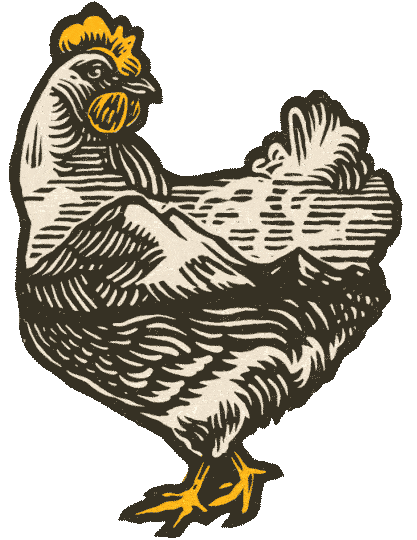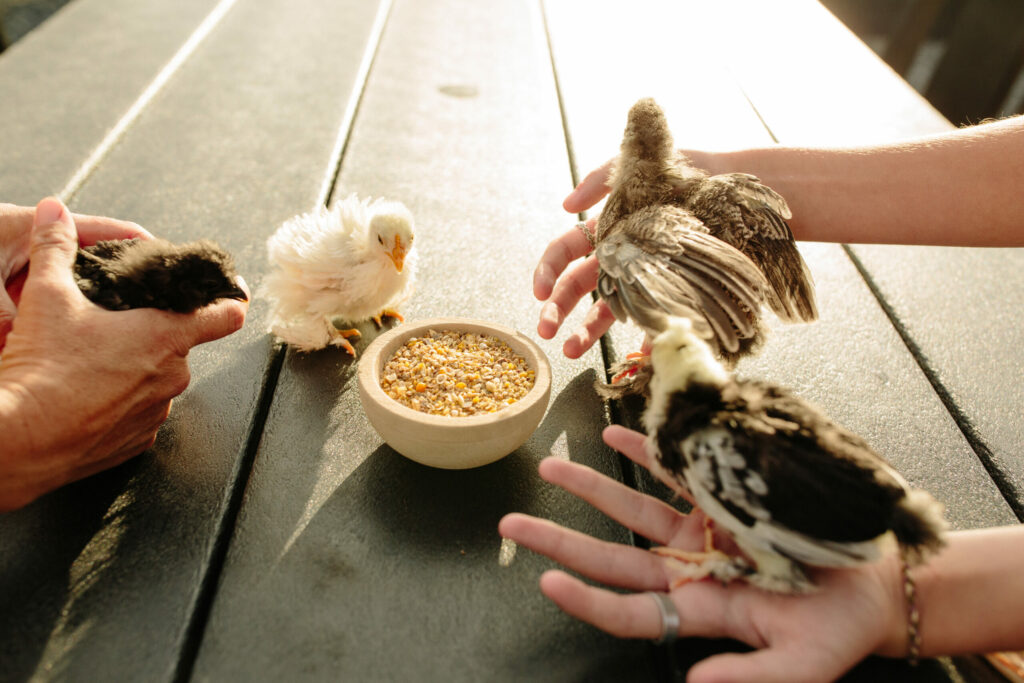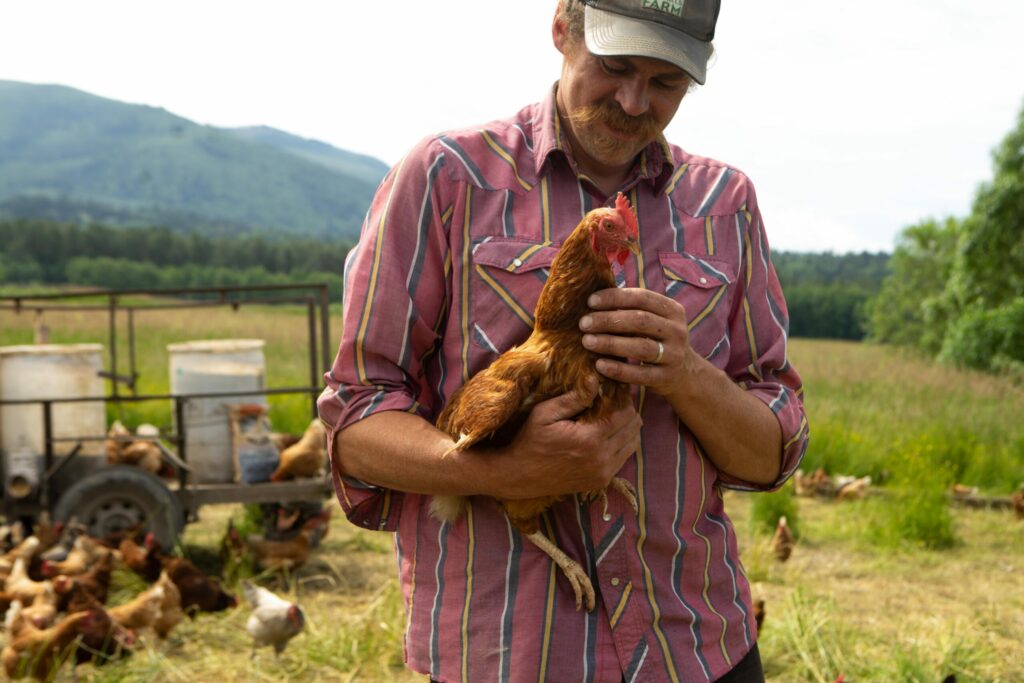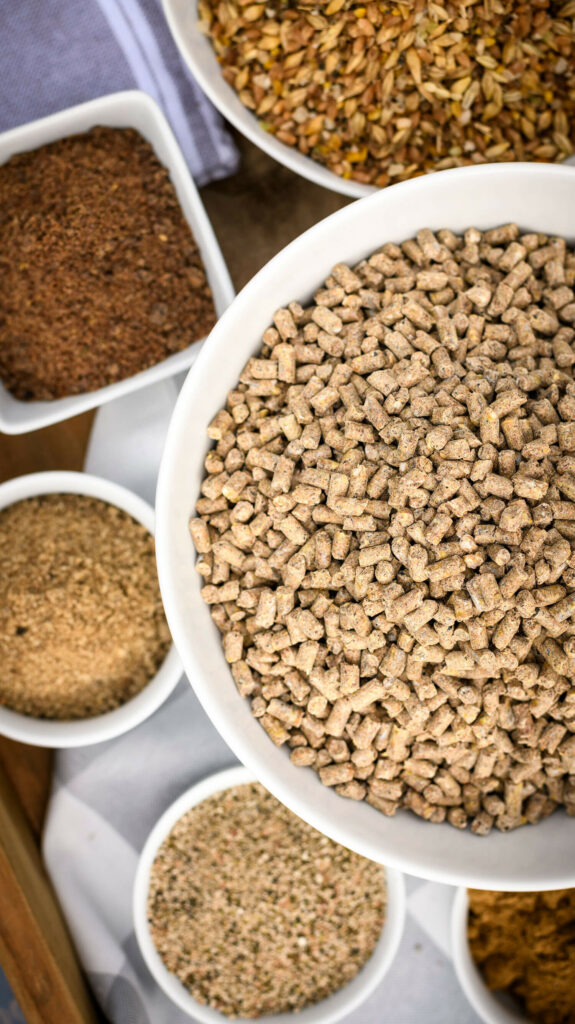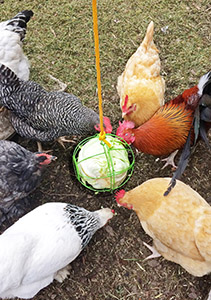 Your flock — all lovely ladies of laying age. But then chicken math gets the best of you and you find yourself with chicks, which grow into pullets, and wait, did one of those pullets just crow? Now you’ve found yourself with chickens of different ages, plus a rooster, and a flock with differing nutritional needs. The young pullets don’t need extra calcium yet since they’re not producing eggs, but the laying hens need their calcium boost for strong eggshells. And Mr. Rooster seems like he’s in a class of his own. Fret not, feeding a mixed flock is doable, and with a little vigilance easier than you think.
Your flock — all lovely ladies of laying age. But then chicken math gets the best of you and you find yourself with chicks, which grow into pullets, and wait, did one of those pullets just crow? Now you’ve found yourself with chickens of different ages, plus a rooster, and a flock with differing nutritional needs. The young pullets don’t need extra calcium yet since they’re not producing eggs, but the laying hens need their calcium boost for strong eggshells. And Mr. Rooster seems like he’s in a class of his own. Fret not, feeding a mixed flock is doable, and with a little vigilance easier than you think.
When feeding a mixed flock, you want to feed according to the needs of the youngest members, then supplement as needed for the others. For example, let’s say the youngest members of your flock are juvenile pullets. Because they aren’t of laying age yet, their systems aren’t ready for the additional calcium found in our Naturally Free Organic Layer — too much calcium in a non-layer’s system can lead to kidney problems. Your laying hens, though, need extra calcium to ensure they are laying eggs with strong shells — calcium will be pulled from their skeletal system if they don’t have sufficient levels when laying.
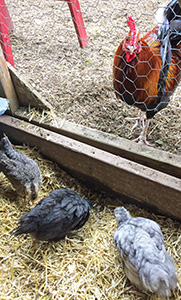 In this example, feed the entire flock our Naturally Free Organic Grower (appropriate for chickens ages 8 weeks and older), and leave necessary supplements free choice. For the juvenile pullets, provide Cluckin’ Good Grower Grit to aid in digestion of our whole grains and for the layers provide Cluckin’ Good Oyster Shell for a calcium boost and Cluckin’ Good Layer Grit. Chickens are great self-regulators when it comes to their diet — they eat what they need and leave what they don’t. Once all of the hens are of laying age, transition them to Naturally Free Organic Layer and continue to leave oyster shell and layer grit free choice.
In this example, feed the entire flock our Naturally Free Organic Grower (appropriate for chickens ages 8 weeks and older), and leave necessary supplements free choice. For the juvenile pullets, provide Cluckin’ Good Grower Grit to aid in digestion of our whole grains and for the layers provide Cluckin’ Good Oyster Shell for a calcium boost and Cluckin’ Good Layer Grit. Chickens are great self-regulators when it comes to their diet — they eat what they need and leave what they don’t. Once all of the hens are of laying age, transition them to Naturally Free Organic Layer and continue to leave oyster shell and layer grit free choice.
For flocks that have a rooster, we recommend feeding our Naturally Free Organic Grower, and supplementing calcium and appropriate-sized grit for your laying hens. Roosters will not eat the free choice calcium since their systems do not need it (again – amazing self-regulators!)
If you have ducks as well, our starter, grower, and layer feeds all contain the proper amounts of niacin needed for a duck’s diet. Like your chickens, make sure they have plenty of time to forage for fresh greens and bugs. Don’t feed ducks medicated feeds — ducks do not need amprolium that is found in medicated feeds. None of our feeds contain medication, so all of our poultry feeds are safe for ducks. All of our feeds are also great for fermenting, no matter what the age of the birds.
Getting the dietary needs of your flock met is essential, but it isn’t an exact science. With a little patience and careful observation of your birds’ eating patterns, though, you’ll have your mixed flock meal times perfected in no time!

